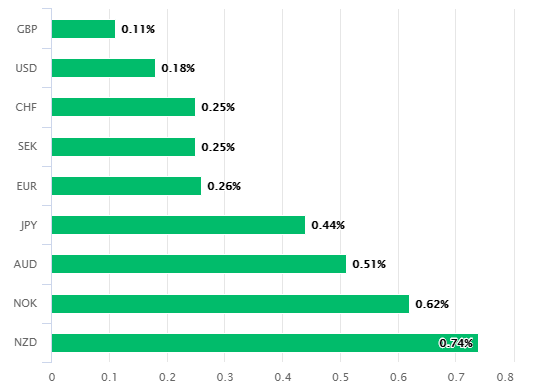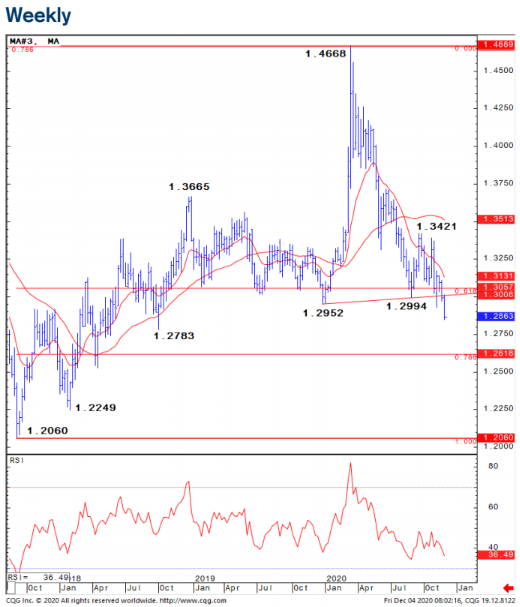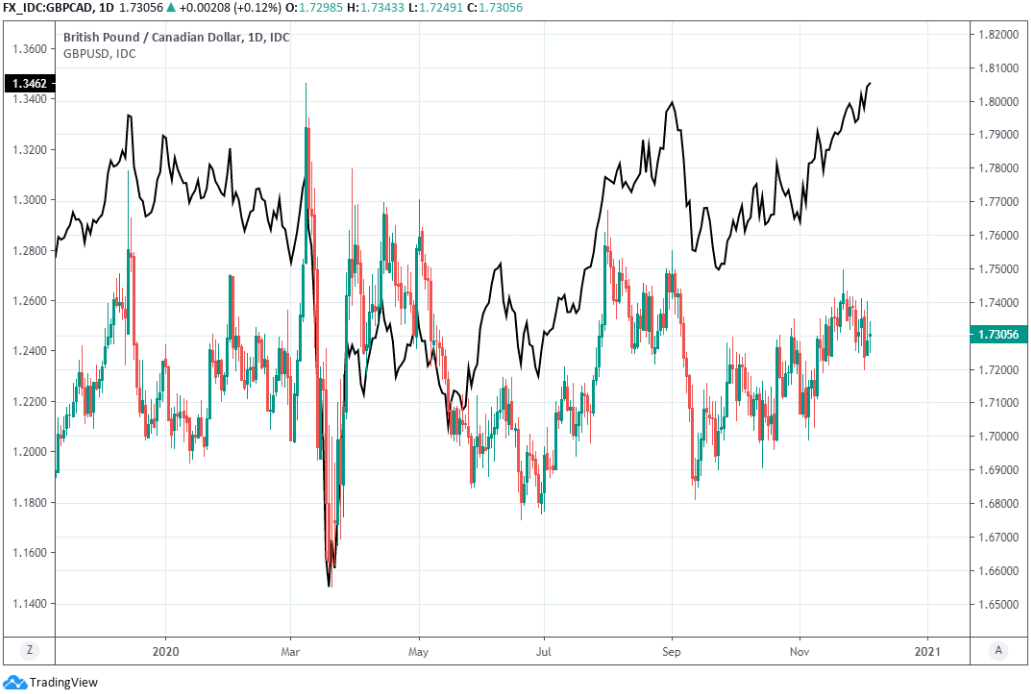Canadian Dollar Breakout Threatens to Blunt GBP/CAD's Recovery
- Written by: James Skinner
-

Image © Adobe Stock
- GBP/CAD spot rate at time of writing: 1.7330
- Bank transfer rate (indicative guide): 1.6721-1.6842
- FX specialist providers (indicative guide): 1.7067-1.7171
- More information on FX specialist rates here
The Canadian Dollar outperformed on Friday following a better-than-expected November jobs report that helped to constrain GBP/CAD, although the completion of a bullish reversal pattern on the charts was warning of further gains ahead for the Loonie and potential difficulty for Sterling.
Canada's Dollar outperformed all major currencies ahead of the weekend when North American jobs reports for the month of November lifted the Loonie from a middling spot in the G10 league table while also to some extent reviving a battered and bruised U.S. greenback.
Statistics Canada said Friday that its economy created or recovered from the coronavirus 62.1k jobs in November, far more than the 22k anticipated by the consensus and enough to force the unemployment rate into a surprise fall from 8.9% to 8.5% when markets had looked for an increase to 9%.
Strong Canadian numbers are all the more notable because economists had expected renewed coronavirus-related restrictions on activity to deal the labour market a setback last month and were enough to enable the Canadian Dollar to keep a revived U.S. greenback at bay ahead of the weekend.

Above: Canadian Dollar performance against major currencies on Friday.
"November gains were all seen in full-time work, which saw employment rise by 99K jobs. By industry, employment increased in the goods sector, while the aforementioned restrictions seemingly restrained hiring in services during the month. The survey was conducted towards the middle of November, which was before the latest rounds of more-severe shutdowns in parts of the country," says Royce Mendes, an economist at CIBC Capital Markets. "As a result, it's likely that Covid will catch up with the Canadian economy in the December data, with a decline expected in both employment and overall economic activity."
Canadian numbers hit the wires at the same time as U.S. payrolls growth surprised on the downside, with only 245k new jobs created and when consensus had envisaged a 480k increase. Downward revisions to earlier numbers also added to concerns about the U.S. recovery outlook.
But while job numbers lifted the Canadian Dollar on Friday afternoon, it was technical factors like the completion of a head-and-shoulders reversal pattern on the USD/CAD chart that were cited by some analysts for expectations of further gains ahead for the Loonie.
"USDCAD continues to move lower following the completion of a very large “head and shoulders” top and bearish “outside day”. With daily MACD momentum also breaking lower, we remain biased to the downside, with support seen next at 1.2847, then 1.2808/00, ahead of the October 2018 low at 1.2783, where we would expect to see a more concerted phase of consolidation," says David Sneddon, head of technical analysis at Credit Suisse.

Source: Credit Suisse.
A head-and-shoulders formation is "one of the more popular and reliable technical price patterns," according to analysts at RBC Capital Markets, and inidicates often-significant downside when occurring within an uptrend.
The Canadian Dollar's move back below 1.2994 on Monday took it back beneath the 'neckline' of a head-and-shoulders pattern that's formed steadily on the USD/CAD chart throughout 2020, setting the greenback up for a fall to at least as far as 1.2783 and potentially all the way to "the May 2018 low at 1.2730," according to Credit Suisse.
"The penetration of the neckline produces the bearish resolution of the head and shoulders pattern –and a return price move fails against the neckline," says George Davis, chief technical strategist at RBC in a client brochure intended to illustrate key technical concepts. "Once the neckline is penetrated, the measured move objective is the distance from the head to the neckline, projected from the breakout point."
The recent fall beneath the 'neckline' at 1.2994 likely means it will now act as a form of technical resistance that bars the path higher in any USD/CAD rebound, while move down to 1.2730 now anticipated by Credit Suisse denotes a break higher for the Canadian Dollar that has implications for GBP/CAD
GBP/CAD always closely reflects a combination of price action in both USD/CAD and GBP/USD.

Above: USD/CAD at daily intervals with U.S. Dollar Index (black line, left axis) and 'neckline' of head-and-shoulders pattern.
"We're still waiting for an EU/UK trade deal and the odds are, we will now only hear something over the weekend with, I suppose, Sunday afternoon a good candidate," says Kit Juckes, chief FX strategist at Societe Generale.
With USD/CAD previously stuck at the 1.30 handle, GBP/CAD had been poised to rise alongside GBP/USD as the UK and EU edge closer toward a Brexit trade agreement, potentially taking it as far as 1.76 this week or next.
But a USD/CAD rate of 1.2730 implies a GBP/CAD rate that holds steady around 1.73 even in the event that GBP/USD returns to 1.36 over the coming days, as has been anticipated by some analysts if a Brexit trade deal materialises.
"One can point to various levels between here and 1.2500 and say they might provide technical support, but it isn't clear to us that the market believes in any one of them," says Greg Anderson, CFA and global head of FX strategy at BMO Capital Markets. "Our rotating financial factor model made an interesting change yesterday. It rotated the DXY index ahead of the S&P 500 and made it the #1 factor. SPX had been the #1 factor for over two months."
A steady GBP/CAD rate was made more likely this week by USD/CAD's increasing sensitivity to the U.S. Dollar Index, which is effectively a reverse version of EUR/USD due to the single currency's 58% weighting in the barometer of the U.S. unit. The new relationship observed by BMO's financial model argues for stability in the Pound-to-Canadian Dollar rate rather than a rally because Sterling (GBP/USD) also tends to track the Euro closely.
"Yesterday's price action seemed to confirm that a transition had taken place," Anderson says. "If we see further movement in EURUSD, it appears that USDCAD will come along for the ride. It's not our base case, but we'd give roughly a 25% probability to a scenario where EURUSD and USDCAD meet at 1.2500 later this month."

Above: GBP/CAD at daily intervals with GBP/USD (black line, left axis).









